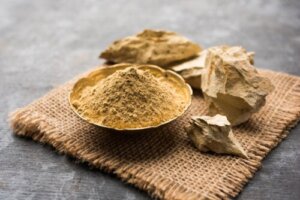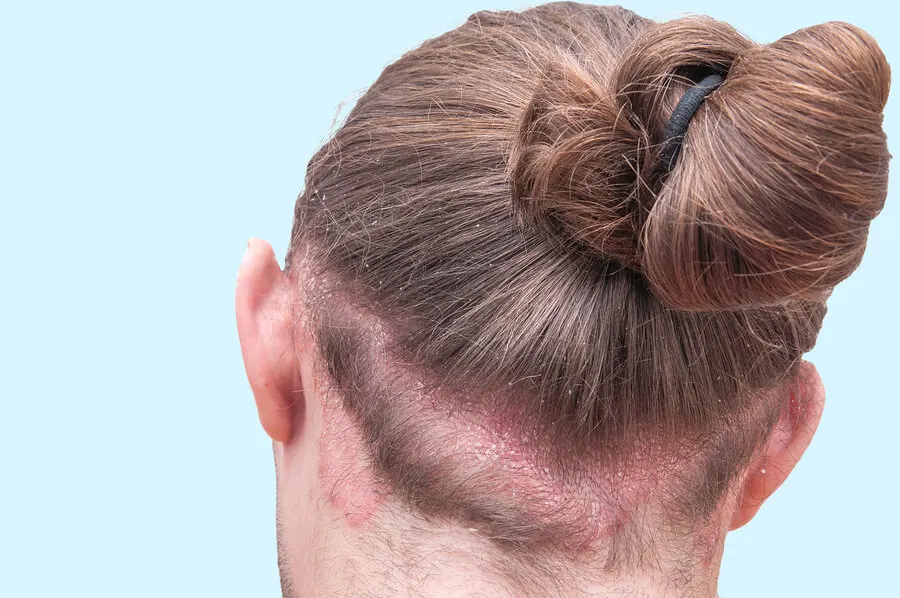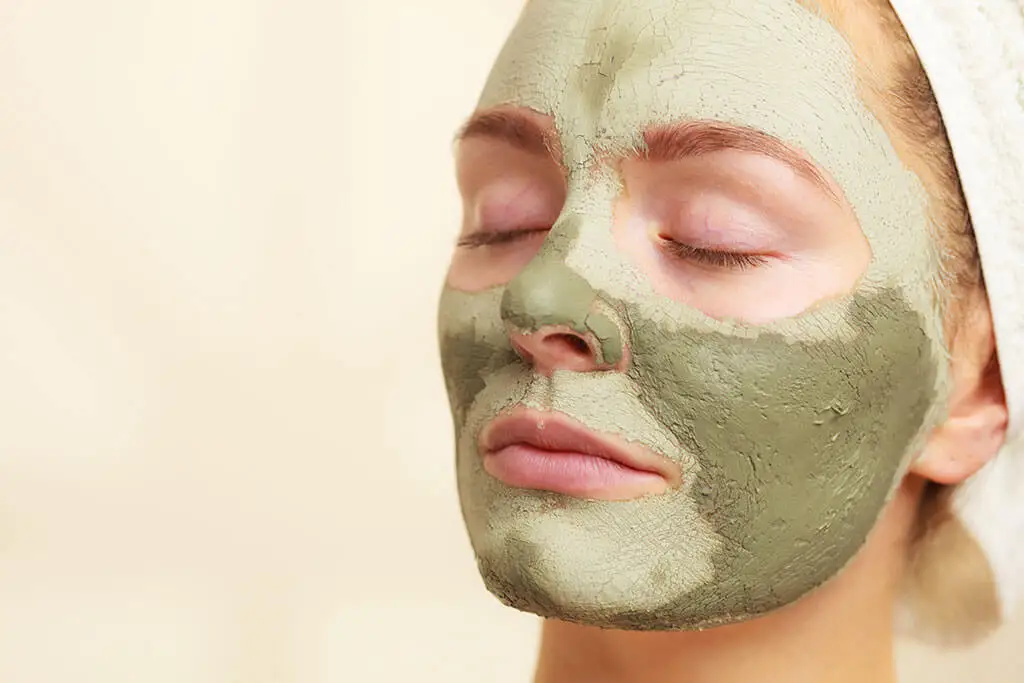Multani Mitti: What Are its Benefits for the Skin?


Reviewed and approved by the doctor Leonardo Biolatto
Multani mitti is also known as “Fuller’s earth” or “Multan mud”. It’s a clay substance that has been traditionally used in countries such as India, Pakistan, and Nepal. In particular, it’s often used to supplement skin and hair cleansing.
According to a study published in the Journal of Pakistan Association of Dermatologists, this is a product largely made up of minerals, including aluminum silicates and magnesium chloride. In fact, it has a composition similar to that of bentonite clay. Do you want to know its main uses?
The benefits of multani mitti for skin health
Multani mitti is a product with a finer texture than clay and a higher water content. It originates from Pakistan, but is also used as a cosmetic in other South Asian countries. To be more precise, it’s commonly used in the preparation of face masks and facial treatments due to its beneficial properties.
Although there’s limited scientific evidence of its effects on the skin, anecdotal evidence suggests that it’s useful in skin and hair beautifying routines. It not only reduces the presence of imperfections, but also contributes to the prevention of premature wrinkles. Let’s take a closer look at its possible uses.
We think you may also enjoy reading this article: How to Make a Good Homemade Face Mask to Clean Your Pores
Control of sebum production
Overactive sebaceous glands lead to excessive sebum production in the skin. As a result, the complexion looks dirty, shiny, and with clogged pores. Multani mitti has astringent qualities that help control this problem.
A study shared in The Open Dermatology Journal states that this ingredient “absorbs” oil residue, cleans pores, and gives the skin a fresher, healthier appearance.

Acne reduction
Treatments with this ingredient are not a solution for acne. In fact, it’s advisable to consult a dermatologist first before including it in the treatment of this skin condition. It’s believed that its astringent effect may help, but there’s no conclusive evidence.
Both magnesium chloride and aluminum silicates are associated with this benefit. Their application not only facilitates the absorption of other skin products, but also removes dead cells, eliminates impurities retained in the pores, and regulates sebum production.
Useful for exfoliating and toning
A mask made with multani mitti has a dual function. On the one hand, it acts as an exfoliant by sloughing off dead skin, which facilitates the renewal process.
At the same time – and as detailed in a study in the World Journal of Pharmacy and Pharmaceutical Sciences – it’s useful for toning. This is explained by its ability to retain moisture and promote optimal absorption of nutrients. Its regular use is even associated with improved circulation and a tightening effect.
Reduction of skin blemishes
The regular application of this clay product is ideal for evening out skin tone, especially in the presence of blemishes. Popular literature links it to the reduction of dark circles under the eyes, protection against sun damage, and a reduction of hyperpigmentation. However, there are no studies to prove this.
What are the risks of using multani mitti on your skin?
Multani mitti is generally considered safe for most people. It’s even suitable for all skin types.
There are no reports of side effects when using this ingredient as a cosmetic. However, inhalation should be avoided, as it may cause throat and respiratory tract irritation.
It should also not come into contact with eyes or open wounds. In people with sensitive skin, it can be a trigger for irritation. It’s advisable to apply a small amount (patch test) before applying it in its entirety.
How can I use it?
In countries such as India, this ingredient is incorporated in a wide variety of cosmetics, such as masks, scrubs, and dermatological treatments. However, by tradition, it’s also often prepared in homemade formulas.
1. A multani mitti toning mask
It’s said that regular application of this mask can reduce the appearance of wrinkles and fine lines. It also tones and firms the skin. Would you like to try it? Here’s how.
Ingredients
- 20 grams of unflavored gelatin
- 20 milliliters of hot water
- 5 grams of multani mitti
Instructions
- Mix the gelatin with the hot water and the multani mitti.
- Once you get a sticky paste, rub it on the skin and leave it on for 20 minutes.
- After this time, rinse with plenty of cold water.
- Repeat its use 2 or 3 times a week.

2. A cleansing mask
If the objective is to make a deep cleansing of the skin with this ingredient, then the formula changes. In this case, it’s complemented by the properties of rose water.
Ingredients
- 20 grams of multani mitti
- 15 milliliters of rose water
Instructions
- Moisten the clay with the rose water to form a thick paste.
- Rub the treatment on the skin with gentle circular massages.
- Leave on for 5 to 8 minutes, andthen rinse.
- Use once a week.
Like this article? You may also like to read: How to Make a Garlic Face Mask to Detox and Rejuvenate Your Skin
3. A multani mitti acne mask
To reduce the presence of acne pimples you can try this interesting treatment. The multani mitti absorbs excess sebum and reduces the presence of residues in the pores. In addition, the other ingredients moisturize and help prevent scarring.
Ingredients
- 15 grams of almond flour
- 15 grams of multani mitti
- 5 drops of tea tree essential oil
- 15 milliliters of milk or water
Instructions
- Pour all the ingredients into a deep bowl until a paste is formed.
- Then, apply the mask to the desired areas and leave it on for 15 minutes.
- Rinse and finish by moisturizing the skin.
- Repeat 3 times a week for optimal results.
What to remember about multani mitti
Multani mitti is an ingredient with similar characteristics to clay. Its astringent qualities allow it to cleanse the skin to prevent the presence of oil, clogged pores, blackheads, and acne, among other imperfections.
For now, there are no scientific studies confirming its efficacy.
Remedies based on this ingredient come from popular literature. And although this substance is usually well tolerated, it’s best to apply it first on a small area of the skin to rule out possible sensitivity reactions.
So, are you going to try this ingredient in your beauty routine?
All cited sources were thoroughly reviewed by our team to ensure their quality, reliability, currency, and validity. The bibliography of this article was considered reliable and of academic or scientific accuracy.
- Kumar, Pramod. (2019). Short Communication Multani Mitti -Is it more than a placebo?. Journal of Pakistan Association of Dermatologists. 29. 345-348.
- Roul A, Le CA, Gustin MP, Clavaud E, Verrier B, Pirot F, Falson F. Comparison of four different fuller’s earth formulations in skin decontamination. J Appl Toxicol. 2017 Dec;37(12):1527-1536. doi: 10.1002/jat.3506. Epub 2017 Jul 26. PMID: 28745436.
- Saxena Pal, Rashmi & Pal, Yogendra & Wal, Pranay. (2017). In-House Preparation and Standardization of Herbal Face Pack. The Open Dermatology Journal. 11. 72-80. 10.2174/1874372201711010072.
- Somwanshi, Sachin & Kudale, Kiran & Dolas, Ramdas & Kotade, Kiran. (2017). FORMULATION AND EVALUATION OF COSMETIC HERBAL FACE PACK FOR GLOWING SKIN. International Journal of Research in Ayurveda & Pharmacy. 8. 199-203. 10.7897/2277-4343.083199.
- Kondej D, Sosnowski TR. Effect of clay nanoparticles on model lung surfactant: a potential marker of hazard from nanoaerosol inhalation. Environ Sci Pollut Res Int. 2016 Mar;23(5):4660-9. doi: 10.1007/s11356-015-5610-4. Epub 2015 Nov 3. PMID: 26527341; PMCID: PMC4766208.
This text is provided for informational purposes only and does not replace consultation with a professional. If in doubt, consult your specialist.








